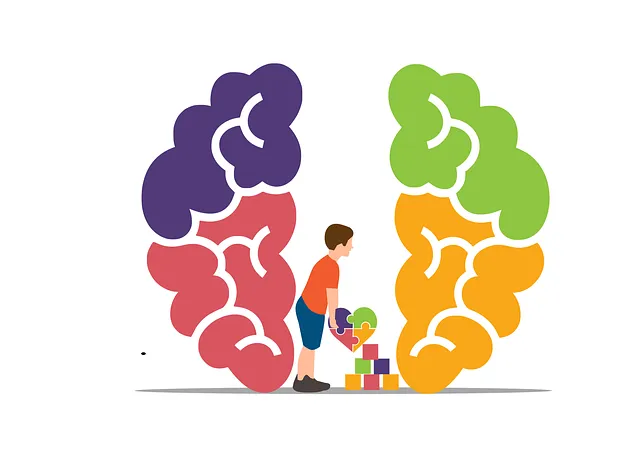Kaiser Permanente behavioral health center Broomfield leads community mental health initiatives by engaging residents, offering workshops & online resources for stress management, anxiety relief, and mood regulation. Their innovative campaigns use storytelling, cultural competency, and digital tools to break down stigma, foster open dialogue, and empower diverse communities worldwide through data-driven continuous improvement.
At Kaiser Permanente’s behavioral health center in Broomfield, understanding community needs is key to developing impactful public awareness campaigns. This article explores effective strategies tailored to engage diverse audiences, from designing compelling messages that resonate with specific demographics to leveraging technology for broader reach. We delve into proven methods for measuring success and iteratively improving initiatives, ensuring long-lasting positive change in the mental health discourse at Kaiser Permanente Broomfield.
- Understanding Community Needs at Kaiser Permanente Broomfield
- Designing Effective Behavioral Health Awareness Campaigns
- Engaging Target Audiences Through Creative Strategies
- Leveraging Technology for Wider Reach and Impact
- Measuring Success and Iterating for Future Initiatives
Understanding Community Needs at Kaiser Permanente Broomfield

At Kaiser Permanente Broomfield, understanding community needs is a cornerstone of their public awareness campaigns. The Kaiser Permanente behavioral health center focuses on addressing not just physical health but also mental well-being, tailoring initiatives to cater to the unique challenges faced by local residents. By conducting extensive research and engaging with the community, they identify pressing issues like stress management, anxiety relief, and mood regulation, which are then incorporated into their educational programs and support services.
This strategic approach ensures that campaigns are relevant and impactful. Through workshops, seminars, and accessible online resources, Kaiser Permanente Broomfield equips individuals with effective stress reduction methods and anxiety relief techniques, fostering a healthier, more resilient community. The center’s commitment to these efforts underscores its role as a vital pillar in the Kaiser Permanente behavioral health center Broomfield, promoting holistic well-being for all.
Designing Effective Behavioral Health Awareness Campaigns

Creating impactful public awareness campaigns for behavioral health is an art that requires a deep understanding of human psychology and effective communication strategies. At Kaiser Permanente behavioral health centers, like the one in Broomfield, experts recognize the power of tailored messaging to address mental wellness concerns within communities. A successful campaign should aim to educate and inspire action by highlighting the significance of emotional healing processes and burnout prevention.
By employing creative visuals, compelling narratives, and accessible language, these campaigns can dispel stigma associated with seeking help for behavioral health issues. Incorporating real-life stories and diverse perspectives ensures that messages resonate with various audiences, fostering open conversations about mental wellness. Additionally, focusing on actionable steps and providing resources encourages individuals to prioritize their emotional well-being, ultimately contributing to healthier communities.
Engaging Target Audiences Through Creative Strategies

Public awareness campaigns play a pivotal role in educating communities about various health issues and encouraging positive behavioral changes. When tailored to specific target audiences, these campaigns can be highly effective, especially when employing creative strategies. For instance, the Kaiser Permanente behavioral health center in Broomfield has successfully engaged its community through innovative approaches. By understanding the unique needs and preferences of different demographics, they’ve developed targeted initiatives.
One such strategy involves leveraging storytelling and personal narratives to connect with individuals on a deeper level. Sharing real-life experiences related to mood management or stress reduction methods can resonate strongly with audiences. Additionally, incorporating cultural competency training in these campaigns ensures that healthcare providers’ messages are sensitive and relevant to diverse communities. This approach fosters trust and encourages open dialogue about important health topics.
Leveraging Technology for Wider Reach and Impact

In today’s digital era, leveraging technology has become a powerful tool for public awareness campaigns, particularly in reaching and impacting diverse communities. The Kaiser Permanente behavioral health center in Broomfield has successfully utilized online platforms to expand its services and educate a broader audience on mental health. By creating engaging content, such as informative videos, podcasts, and interactive webinars, they’ve enhanced accessibility to resources that might otherwise be limited by geographical constraints. This digital approach ensures that valuable information about self-care, stress management, and overcoming mental health challenges is available to all, fostering a sense of community and empowerment.
For instance, the center’s initiatives focus not only on raising awareness but also on promoting cultural sensitivity in mental healthcare practice. They’ve designed targeted campaigns that incorporate self-awareness exercises tailored to different cultural backgrounds, ensuring that individuals from various ethnicities and communities feel understood and supported. This tech-driven strategy has proven to be a game-changer, encouraging folks to prioritize their mental well-being and seek help when needed, ultimately leading to positive changes in the lives of many.
Measuring Success and Iterating for Future Initiatives

Evaluating the impact and success of public awareness campaigns is an essential step in understanding what resonates with audiences and which strategies require refinement. At the Kaiser Permanente behavioral health center in Broomfield, for instance, stakeholders employ data-driven approaches to measure campaign effectiveness. This involves tracking key performance indicators (KPIs), such as website traffic, social media engagement, and changes in public perception through surveys and focus groups. By analyzing these metrics, the team can identify what aspects of the campaign were particularly successful and which areas need improvement.
This continuous evaluation allows for iterative development, ensuring that future initiatives are informed by past successes and failures. For example, if a particular messaging strategy proved effective in reducing mental illness stigma, similar tactics could be replicated in upcoming campaigns. Conversely, if a certain approach didn’t yield the desired results, campaign developers can adapt, learning from the experience to create more impactful and tailored public awareness campaigns for resilience building.
Public awareness campaigns play a vital role in educating communities, especially regarding their mental well-being. As demonstrated by Kaiser Permanente Behavioral Health Center’s initiatives in Broomfield, understanding local needs is key to successful campaign design. By combining creative strategies with technology, healthcare providers can effectively reach and engage diverse audiences, fostering positive behavioral changes. Continuous measurement and iteration ensure these campaigns remain impactful, ultimately improving community health outcomes at the Kaiser Permanente Broomfield center and beyond.






